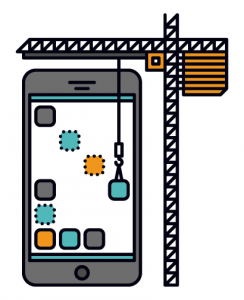E-commerce has gone global. Today, nearly all businesses have a presence online. More so, companies prefer doing business exclusively on the internet to stay competitive since they will avoid related expenses that come with physical premises.
The ease of buying a product is directly proportional to the probability of a client purchasing the product. Many people have admitted to buying goods from an online store rather than a physical one because they wanted to avoid the struggle that comes with having to find a physical store. According to a report done by Forrester forecasts, revenues from mobile commerce will surpass the $142 billion mark by the end of 2016. The report further stated that the average value of purchases done from a tablet is $98.07 and about $81.25 for purchases on mobile phones.
These numbers show us that there is a lot of money to be made from mobile commerce. However, for you to start processing electronic purchases, you need an app that has a flawlessly integrated payment gateway.
What is a payment gateway?
In a nutshell, a payment gateway is essentially a software solution that allows funds to be exchanged electronically for e-commerce services within websites and mobile applications. These payment gateways were created to make the life of a shopper easier and more convenient since they enable payment for goods and services without hard cash. These payment gateways have been quickly embraced by entrepreneurs because they have the support of most financial systems such as American Express, MasterCard, and Visa. Since they are also quite fast in verifying customer data, the payment process is usually quite fast thus saving user’s time.
.jpeg?width=650&name=eteam-blog-mobilepayment-img-1%20(1).jpeg)
Unfortunately, not all payment gateway solutions are right for all businesses. Before implementing a payment solution on your mobile application, you need to consider a couple of things such as:
The seller’s account type
Depending on the needs of a business, you can choose one of two types of seller accounts. These are the aggregated and dedicated seller accounts. If you prefer a smooth route, you will have to select the aggregated seller account. Though it has its limitations such as longer money transfer times, it’s the least complex method to implement. However, for those that require a more dedicated gateway, the later will do. Although they are quite costly regarding purchase and implementation, they also have their advantages. Some of them include faster funds processing and more extensive control over finances.
Goods being sold
Depending on what you want to sell, you must consider different payment gateways. If you are dealing with physical products, you can always integrate some of the popular payment processors such as PayPal, Visa, and MasterCard. If on the other hand, you are selling digital goods and your application is distributed either by Apple App Store or Google Play Store, there is a bit of a catch. Since these platforms don’t allow third-party e-commerce services on apps distributed by them, all the transactions must go through the particular user accounts.
Security certificates
Even if you are using the most trusted gateway providers, you will still need to buy a PCI DSS (Payment Card Industry Data Security Standard) compliance certificate. Getting this certificate will mean going through a two-stage procedure. The first thing to do in this instance is evaluating all your information systems that house card data and fixing issues. Then, your organization will undergo an audit by one of the PCI Security Standards Council companies, after which you can be open for business.
Choosing the right payment gateway provider
A lot of payment gateways exist in the market today, each with its merits and drawbacks. Without further ado, let’s consider some of them.
PayPal
Established in 1998, PayPal has grown to support more than 25 currencies and clients from 202 countries. It’s among the top payment processors in the world. If you need a fast and secure transaction, this would be an excellent gateway to consider. Developers can use the PayPal mobile SDK to process PayPal, accept bitcoin and credit cards.
Stripe
As one of the world’s leading payment processors, Stripe supports payments for more than 100 currencies. Primarily made for developers, Stripe has a variety of APIs ready for integration with any mobile app. Stripe is quite appealing in a sense that it has allowed for a lot of personalization of payment forms to conform to your brand. This will indeed be a confidence booster for your clients.
Braintree
Braintree is a child of the PayPal family. It is widely accepted and operates in 40 diverse countries supporting about 130 currencies. The most attractive thing about Braintree is that it allows for processing of PayPal, Bitcoin, Credit Cards, Google pay and Apple Pay. This means that as a business, you will be able to process a variety of electronic payments by simply integrating one into your app. You can easily customize the checkout form to your liking or use the more readily available drop in checkout UI.

Using SDKs to integrate payment gateways
All payment gateway providers give developers software development kits (SDK) to connect the gateway to the existing application. The SDKs come packed with everything a developer will need to integrate the two. Not only do the libraries make integration easier, it also makes upkeep and monitoring much simpler.
Cost of integrating payment gateways
The final piece and perhaps one of the most important would be how much it would cost a business to integrate a payment gateway into an app. Regardless of the gateway provider chosen, the connection procedure should take about 50 work hours. Afterwards, the application with the added payment functionality must be thoroughly tested. Testing will take about 20 additional hours. What’s more, the gateway will need to be supported throughout the operation and well after integration is complete. This will require an extra 5-10 hours monthly. Given the hourly rate your company is willing to pay, you should be able to do the math from those numbers.








